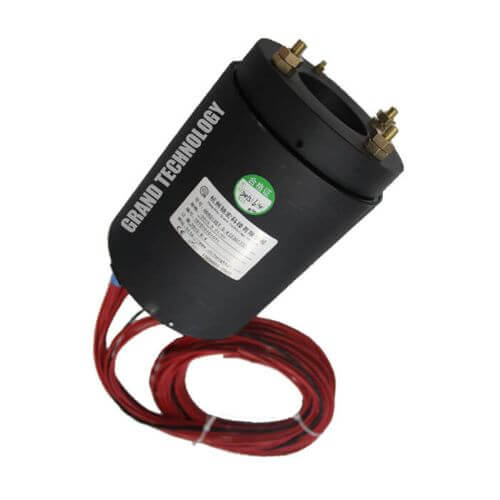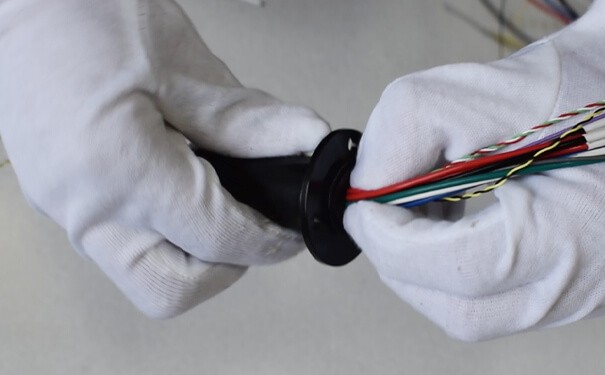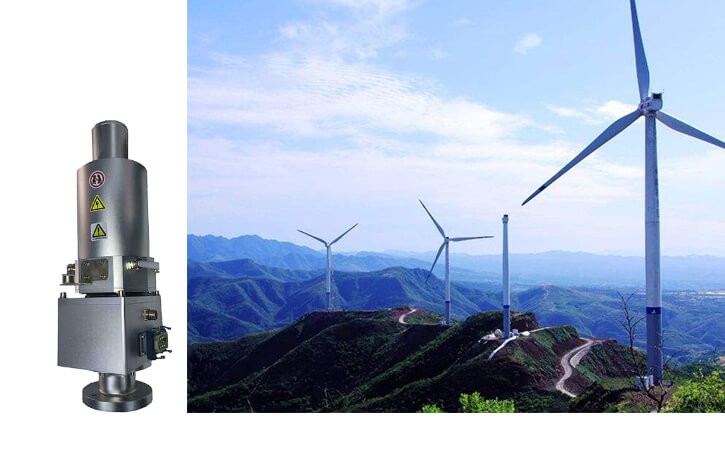This comprehensive exploration of slip speed introduces its fundamental concepts, takes a technical deep dive into calculations and influencing factors, and examines its role in daily life and industrial applications. The article also highlights the concerns associated with slip speed, offering practical solutions for common issues. Looking forward, the discussion navigates innovations in controlling slip speed and its potential applications in emerging technologies, underscoring the subject’s pivotal role in our technological future.
Introduction to Slip Speed
What Is Slip Speed?
Slip speed is a term intimately familiar to those versed in the world of rotating machinery, yet less known outside technical circles. Simply put, it is the difference in speed between the synchronous speed of an electrical magnetic field and the actual speed at which an induction motor’s rotor turns. This slip is vital for inducing rotor current and producing torque in an induction motor, essentially making this apparent “lag” the secret to traction and motion. Imagine a track athlete consistently keeping just a step behind the pacer, maintaining the ideal pace — that’s the role slip speed plays in keeping electric motors running efficiently.

Why does it matter? Without slip, the magnetic field would not interact with the rotor, and no electromagnetic force would be generated to drive the motor. Thus, slip speed is not a design flaw but a masterfully orchestrated characteristic that allows for the control and functionality of electric motors in numerous applications.
The Basics of Slip Speed:
One may encounter slip speed most often when delving into the inner workings of an induction motor — the type of electric motor common in everything from household appliances to industrial equipment. The fundamental principles of slip speed stem from the way these motors operate. Induction motors run on alternating current (AC) and work on the principle of electromagnetic induction. Here, the rotating magnetic field in the stator, which is the stationary part of the motor, is designed to rotate at a specific speed known as the ‘synchronous speed.’
Yet, the rotor, the moving part, does not catch up entirely. The ensuing “slip” is the motor jargon for the slight lag the rotor has behind the stator’s magnetic field. This speed difference is crucial — it is what induces electric current in the rotor and makes it turn. Therefore, knowing the slip speed is essential for gauging the motor’s performance and efficiency.
In the realm of real-world applications, consider the escalators that serenely carry shoppers to their next destination within a mall. Their smooth operation depends on slip speed, ensuring that there is enough torque to keep the steps moving even as crowds of people step on and off. Or in industrial settings, where slip speed ensures that machines can adjust their torque in response to varying loads without stalling or overworking the motor.
Understanding slip speed can also help bust common misconceptions, such as the idea that higher speeds always equal better performance. Not so in the world of induction motors — where appropriate slip speeds can mean the difference between a motor that works efficiently and one that overheats or wears prematurely.
Armed with this foundational understanding, we’ll delve into how slip speed is calculated, allowing us to appreciate the ballet of electromagnetic forces that keep our electric world spinning.
Technical Deep Dive of Slip Speed
Factors Affecting Slip Speed:
Slip speed is influenced by a trilogy of crucial factors: rotor resistance, load, and the frequency of the electrical supply. Each of these plays a pivotal role in the motor’s performance and efficiency.
- Rotor Resistance: Higher rotor resistance increases slip speed. This is because more resistance in the rotor requires a greater slip to induce sufficient current for the necessary torque. It’s a delicate balance, as too much slip can lead to inefficiencies and excessive heat. For example, in motors designed for high-starting torque, such as those used in elevators, increased rotor resistance and hence slip are desirable at startup but need to be carefully controlled.
- Load: The load on the motor directly influences slip speed. As the load increases, the rotor slows down slightly, increasing the slip speed. This relationship ensures that the motor can adjust its torque output based on the demands placed upon it, like a conveyor belt system that may see varying weights throughout its operation. Managing load efficiently is key to maintaining optimal slip speed and, by extension, motor efficiency.
- Frequency of the Electrical Supply: The frequency of the supplied electricity affects the synchronous speed of the motor, which in turn influences slip speed. Higher frequency increases the synchronous speed, potentially reducing slip if the rotor speed doesn’t change. This principle is harnessed in variable frequency drives (VFDs), which adjust the frequency of the supply to control motor speed and improve efficiency, such as in adjustable-speed HVAC systems.
What is these factors and their impact on slip speed is akin to mastering the dials on a high-precision machine, where each adjustment can lead to significant improvements in performance, energy consumption, and lifecycle of the motor.
Armed with the knowledge of how to calculate slip speed and what affects it, we move towards uncovering the practical applications and real-world implications of this fundamental concept in the next section of our exploration.
Practical Applications in Slip Speed
Slip Speed in Daily Life
The fascinating dance of slip speed doesn’t just happen unseen in the bowels of industrial machinery; it harmonizes the operation of many appliances and systems we encounter daily, touching our lives in more ways than we might imagine. To bring the significance of slip speed into a more relatable realm, let us examine just how pervasive this phenomenon is in our everyday environments.
One of the most familiar faces of slip speed in action is right in our homes — the humble washing machine. The motor that powers the drum to rotate, mixing water and detergent with clothes, relies on slip speed to operate efficiently. The variation in slip speed allows the drum to start gently, preventing damage to delicate fabrics, then ramp up for a thorough wash, and slow down smoothly for the spin cycle.
Another domain where slip speed plays a crucial role is in the ventilation systems that regulate air quality and temperature in buildings. The fans that drive these systems need to adapt to varying conditions — like the number of occupants in a room or the external weather — requiring changes in speed and torque that are directly influenced by slip speed. Efficient management of slip speed ensures that these systems use only the energy necessary, enhancing sustainability efforts.
Public transportation, too, benefits from the nuanced control offered by slip speed. Take, for instance, the city buses that navigate the urban landscape. The electric traction motors that propel these vehicles manage the delicate balance between speed and torque through careful control of slip speed, ensuring smooth acceleration and deceleration amidst constant stops and starts, all while maintaining efficiency and minimizing wear on the system.
Tuning Slip Speed for Efficiency and Performance
While slip speed naturally occurs in electric motors, the art and science of precisely manipulating it allow engineers and technicians to extract maximal performance and efficiency from machinery. Tuning slip speed is like orchestrating a symphony, where each instrument (or in this case, machine component) must hit the right note at the right time.
One of the tools at an engineer’s disposal is the Variable Frequency Drive (VFD). By adjusting the frequency of the electrical supply to the motor, a VFD can finely tune the synchronous speed, and hence the slip speed, allowing precise control over motor speed and torque. This is especially beneficial in applications where the load conditions change regularly, such as in pumping systems. Here, the requirement to maintain a constant pressure despite varying demand levels can be elegantly managed by modulating slip speed, resulting in significant energy savings and reduced mechanical stress.
In heavy industrial settings, such as conveyor belts in mining operations, the ability to control slip speed means being able to adjust the belt speed in response to varying load conditions — ensuring that energy consumption is optimized, and the risk of overloading the system is minimized. This not only ensures operational efficiency but also prolongs the lifespan of the equipment.
Moreover, in the realm of renewable energy, particularly wind turbines, tuning slip speed maximizes energy output. The variable nature of wind speeds requires the turbine’s generator to accommodate fluctuating loads efficiently. Manipulating slip speed allows for optimal power generation, even when wind conditions are not consistent, showcasing slip speed’s vital role in the clean energy sector.
These practical applications illustrate not only the ubiquity of slip speed in technology that propels our modern world but also highlight the sophistication and ingenuity involved in harnessing this principle towards sustainable, efficient, and high-performance machinery. As technology evolves, so too will the ways in which we exploit the nuanced control offered by slip speed, likely making it an even more critical component in the engineering landscapes of the future.
Slip Speed Concerns and Solutions
The Impact of Slip Speed on Energy Efficiency:
The allure of harnessing electricity to do our bidding has always been tempered by a respect for the efficiency with which we convert this energy into useful work. This balance is often personified in the world of electric motors through the concept of slip speed — the little engine of change that could either be a silent siphon of power or a beacon of efficiency.
- Understanding Efficiency and Loss: In an ideal world, electric motors would convert all the electrical energy into mechanical energy with no losses. In reality, some energy is always lost due to factors like friction and resistance. Slip is an inherent part of induction motors and a certain level is necessary for them to work, but excessive slip signifies energy being lost as heat instead of being used for productive work.
- Minimizing Energy Loss: The question then becomes one of optimization. How do we sculpt the slip speed to match our desire for a greener footprint? The answer often lies in precision tuning with VFDs, as mentioned before, and selecting motors with appropriate slip characteristics for their intended application. For example, using a high-slip motor for applications that require high starting torque can be beneficial, whereas for constant-speed applications, a low-slip motor might be more appropriate.
- Embracing New Technology: Moreover, embracing newer motor designs such as permanent magnet motors, which inherently have a lower slip, can significantly improve efficiency. Additionally, advancements in materials science providing better conductivity and magnetic properties contribute to motors with lower slip speeds and higher efficiencies.
Troubleshooting Slip Speed Problems:
When the dance of electricity and magnetism within an induction motor’s coils goes awry, it manifests in issues such as overheating, reduced torque, and sometimes even premature failure. Understanding the common symptoms and solutions for slip speed related problems is critical for maintenance personnel and engineers alike.
- Overheating: When a motor consistently operates with higher slip than designed, it can lead to overheating. This is like running a car engine at high RPMs for too long. To prevent this, ensuring that the motor is not overloaded and regularly servicing to check for wear and proper lubrication can help maintain an optimal slip speed.
- Reduced Torque: If a motor is not providing the expected level of torque, the cause might be low slip speed, which can result from an under-loaded motor or a supply voltage that is too high. Technicians can adjust the load, recalibrate the motor control system, or regulate the supply voltage to mitigate this issue.
- Harmonics: Another less-discussed but significant issue is harmonic distortion, which can affect motor performance and slip speed. Installing proper filters or using motors designed to minimize the effects of harmonics can be effective solutions.
- Preventive and Predictive Maintenance: Regularly scheduled preventive maintenance can catch many potential issues before they manifest as slip speed problems. Additionally, the use of predictive maintenance techniques, such as vibration analysis and thermal imaging, can identify motors that are at risk due to slip-related issues, allowing for corrective action before costly downtime occurs.

Through an engaging case study, imagine a scenario where a factory experiences unexplained motor failures. A thorough analysis reveals that the root cause is excessive slip speed leading to overheating. The solution involves retrofitting the line with VFDs, setting up a preventive maintenance schedule, and training the staff to recognize the early signs of slip speed related issues. The result is a dramatic reduction in downtime and an improvement in overall operational efficiency.
In the vast electrical networks and machineries that power our world, paying heed to the warnings and wisdom offered by slip speed can illuminate the path to energy conservation and system longevity. With a blend of informed design choices, vigilant maintenance practices, and a commitment to constant improvement, the trials posed by slip speed concerns can be effectively transformed into triumphs of technological stewardship.
Future Perspectives of Slip Speed
The evolution and application of slip speed have been pivotal in numerous fields, with its implications reaching far into the innovations of tomorrow. Understanding and controlling slip speed not only enhances efficiency and performance in traditional sectors but also paves the way for groundbreaking advancements in emerging technologies. This chapter delves into the future perspectives of slip speed, focusing on novel innovations aimed at its control and exploring its potential role in ushering new waves of technological advancements.
Innovations in Controlling Slip Speed
The Next Frontier in Efficiency and Performance
Slip speed, the difference in velocity between a rotating magnetic field and the rotor in an electric motor or generator, has long been a critical parameter in optimizing the performance and efficiency of electrical machines. With the world pivoting towards more sustainable and efficient technologies, the control of slip speed has never been more crucial. Advances in materials science, control algorithms, and data analytics are at the forefront of pushing the boundaries in this realm.
Advanced Materials and Motor Design
The introduction of novel materials such as high-temperature superconductors and amorphous metals is revolutionizing motor efficiency. These materials reduce energy losses and allow for more precise control of slip speed, thereby enhancing performance. Innovations in motor design, leveraging these materials, are set to redefine what’s possible, offering unparalleled efficiency levels.
Intelligent Control Systems
The advent of artificial intelligence (AI) and machine learning (ML) technologies has opened new vistas in controlling slip speed. Intelligent control systems, equipped with AI, can predict and adjust slip speed in real time, optimizing energy consumption and performance for varying loads and operational conditions. This predictive capability ensures the motor or generator operates at peak efficiency, reducing wear and extending its lifespan.
Case Study: High-Efficiency Variable Frequency Drives
One real-world application that demonstrates the impact of these innovations is the development of high-efficiency variable frequency drives (VFDs). These devices precisely control the electrical supply to motors, adjusting the slip speed dynamically for optimal performance. Advances in VFD technology, coupled with smart sensors and control algorithms, have led to significant energy savings and reduced operational costs in industries ranging from manufacturing to HVAC systems.
The Role of Slip Speed in Emerging Technologies
Enabling the Future of Renewable Energy and Manufacturing
Understanding and controlling slip speed is not just about enhancing existing technologies; it’s about enabling the future. As the world looks towards more sustainable energy solutions and smarter manufacturing processes, the role of slip speed becomes increasingly significant.
Renewable Energy Systems
In wind turbines and hydroelectric generators, slip speed control is vital for maximizing energy capture and conversion. Innovative control strategies are being developed to adapt to the variable nature of wind and water flow, optimizing slip speed to ensure that these systems operate at maximum efficiency. Such advancements could lead to more reliable and cost-effective renewable energy sources, accelerating the transition to a greener future.

Advanced Manufacturing Processes
The principles of slip speed are also finding applications in the field of advanced manufacturing, particularly in precision machines and robotics. Accurate control of slip speed in motors ensures precise movements, essential for tasks requiring high levels of accuracy, such as in the assembly of electronics or 3D printing technologies. As manufacturing processes become more automated and sophisticated, the ability to control slip speed accurately will be crucial for maintaining quality and efficiency.

Anticipating Challenges and Opportunities
As we venture into these new territories, several challenges and opportunities arise. Addressing common misconceptions, such as the complexity of implementing these advanced control systems and the perceived high costs, is pivotal. Furthermore, providing actionable advice, such as investing in research and development (R&D) and fostering collaborations between academia and industry, can help mitigate these challenges. The journey towards mastering slip speed control and unlocking its potential in emerging technologies is filled with possibilities – a testament to the relentless pursuit of innovation and efficiency.
In conclusion, the exploration of slip speed, from innovations in its control to its role in emerging technologies, offers a glimpse into a future shaped by efficiency, sustainability, and technological excellence. Engaging with these advancements, understanding their impacts, and overcoming the associated challenges will be key to harnessing the full potential of slip speed in powering the innovations of tomorrow.
Conclusion of Slip Speed
As we draw this exploration to a close, it’s important to circle back and reflect on the pivotal role that slip speed plays across various technological domains. The journey through the significances, innovations, and future prospects of slip speed underscores its criticality in both existing systems and emerging technologies. This conclusion aims not only to recapitulate the core insights shared but also to foster a vibrant community dialogue around this fascinating topic.
Revisiting the Significance of Slip Speed
A Foundation for Innovation and Efficiency
From the precise control in electric motors and generators to its promising applications in renewable energy and advanced manufacturing, slip speed emerges as a fundamental aspect of numerous technological advancements. Innovations in controlling slip speed, leveraging advanced materials, and intelligent systems are paving the way for unprecedented levels of efficiency and performance. The exploration into the realms of high-efficiency variable frequency drives (VFDs), renewable energy systems, and precision manufacturing processes illustrates just how integral an understanding of slip speed is to pushing the boundaries of what’s possible.
The discussion underscored not only the technical aspects and advancements but also highlighted the necessity for professionals and enthusiasts to grasp the nuances of slip speed. This understanding is vital for driving innovation, optimizing performance, and ultimately contributing to a more efficient, sustainable future.
Engaging the Community
Sharing Insights, Catalyzing Innovation
The journey of understanding and innovating on slip speed does not end with this article. It continues with you, the reader, and the broader community of engineers, enthusiasts, and professionals. Your experiences with slip speed, whether through professional projects or observations of everyday devices, are crucial for fostering a deeper understanding and appreciation of its role in technology.
We invite you to share your insights, questions, or experiences related to slip speed. Whether it’s about challenges you’ve faced in optimizing motor efficiency, innovative applications of slip speed control you’ve encountered, or simply curious observations of slip speed in action around you, your contributions are invaluable. By sharing our knowledge and experiences, we can debunk common misconceptions, provide practical advice, and inspire further exploration.
A Call to Collaboration
Engaging with the community goes beyond sharing stories; it’s about collaboration. Professionals across industries are encouraged to share their strategies for controlling slip speed, discuss the impacts of recent innovations, and explore potential applications in new fields. Through forums, social media, or professional networks, we can connect, fostering a community that’s equipped to tackle the challenges and opportunities that lie ahead in the realm of slip speed.
The significance of slip speed in our technological landscape cannot be overstated. As we’ve seen, it’s a cornerstone of efficiency and innovation in numerous fields. As we continue to explore and push the boundaries of what’s possible, let’s remember to share our journeys, learn from each other, and together, contribute to the evolving story of slip speed and its impact on our world. Your engagement and contributions are what will drive this topic forward, inspiring the next wave of innovations and applications.
See What We Can Do

